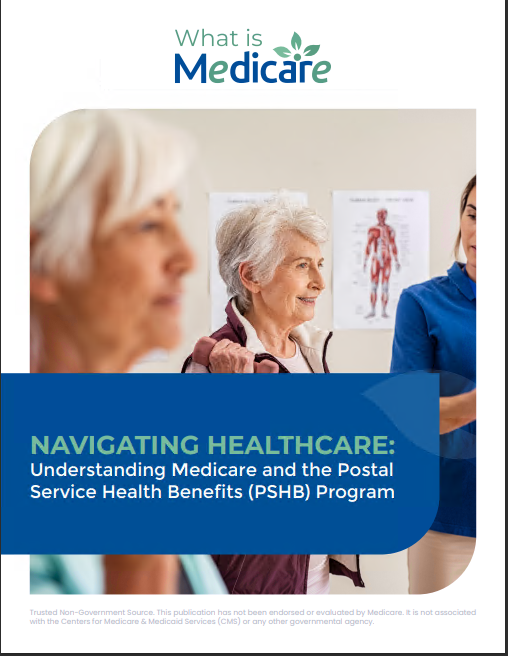Key Takeaways
- Understanding your Medicare Summary Notice (MSN) is crucial for managing your healthcare costs and ensuring accurate billing.
- Knowing the key sections and how to review them can help you verify your coverage, identify errors, and maximize your Medicare benefits.
Medicare Summary Notice: Essential Steps Just for You
Navigating the intricacies of Medicare can be challenging, but understanding your Medicare Summary Notice (MSN) is a crucial step in managing your healthcare effectively. The MSN provides detailed information about the services and supplies billed to Medicare, what Medicare paid, and the amount you may owe. This article guides you through the essential steps to understand and review your Medicare Summary Notice, ensuring you can manage your healthcare costs efficiently.
Introduction to the Medicare Summary Notice (MSN)
The Medicare Summary Notice (MSN) is a statement sent to Medicare beneficiaries every three months. It details all the services and supplies that were billed to Medicare during that period. The MSN is not a bill but a summary of your Medicare claims, explaining what Medicare paid for and what you might need to pay.
Understanding the MSN is vital for several reasons:
- Verify Services: It allows you to verify that the services and supplies listed were actually received.
- Check Payments: You can ensure that Medicare has paid the correct amount.
- Identify Errors: Reviewing the MSN helps you spot and correct any billing errors or potential fraud.
- Manage Costs: It provides a clear picture of your out-of-pocket expenses, helping you manage your healthcare budget.
Key Sections of the Medicare Summary Notice
The MSN is divided into several sections, each providing specific information about your Medicare claims. Understanding these sections is essential for effectively reviewing your statement.
-
Summary of Claims: This section provides an overview of all claims processed during the reporting period. It includes the total number of claims, the amount billed, the amount Medicare paid, and the amount you may owe.
-
Part A and Part B Coverage: The MSN separates services covered under Medicare Part A (hospital insurance) and Medicare Part B (medical insurance). Each section lists the services provided, the amount billed, and the payment details.
-
Claim Details: This section breaks down each individual claim, providing detailed information about the services or supplies received, including:
- Date of Service: The date when the service or supply was provided.
- Provider Name: The name of the doctor, hospital, or supplier who provided the service.
- Service Description: A brief description of the service or supply received.
- Amount Billed: The amount billed to Medicare for the service or supply.
- Medicare Approved: The amount Medicare has approved for the service.
- Medicare Paid: The amount Medicare paid to the provider.
- You May Be Billed: The amount you may need to pay, which includes deductibles, copayments, or coinsurance.
-
Your Deductible Status: This section shows the status of your Medicare Part A and Part B deductibles. It indicates how much of your annual deductible you have met and how much remains.
-
Appeal Rights: If you disagree with a claim decision, the MSN provides information on how to file an appeal. It includes the steps you need to take, the timeframe for filing an appeal, and contact information for assistance.
-
Preventive Services: Medicare covers many preventive services at no cost to you. This section highlights the preventive services you are eligible for and reminds you to take advantage of these benefits.
How to Review and Verify Your Medicare Summary Notice
Reviewing your MSN is an essential step in managing your healthcare and ensuring accurate billing. Here are the steps you should follow:
-
Compare with Your Records: Compare the services and supplies listed on the MSN with your personal health records and receipts. Ensure that you actually received the services billed to Medicare.
-
Check the Dates and Providers: Verify the dates of service and the names of the providers. Ensure that the information matches your records and that you recognize all providers listed.
-
Review the Amounts Billed and Paid: Look at the amounts billed to Medicare, the approved amounts, and the payments made. Ensure that Medicare has paid the correct amount and that you are not being overcharged.
-
Identify Potential Errors: Look for any discrepancies or errors in the billing information. Common errors include services you did not receive, duplicate charges, or incorrect billing codes.
-
Check Your Deductible Status: Review your deductible status to understand how much of your annual deductible you have met. This helps you anticipate future out-of-pocket expenses.
-
Review Preventive Services: Take note of the preventive services listed and ensure you take advantage of these benefits. Preventive services can help you maintain your health and avoid more costly treatments in the future.
-
Understand Your Appeal Rights: If you find an error or disagree with a claim decision, review the appeal rights section. Follow the steps provided to file an appeal and seek assistance if needed.
Steps to Take If You Identify an Error
If you identify an error or discrepancy on your MSN, it’s important to take immediate action to resolve the issue. Here are the steps to follow:
-
Contact the Provider: Reach out to the healthcare provider or supplier who billed Medicare. Explain the error and request a correction. Providers can often resolve billing errors quickly.
-
Contact Medicare: If you are unable to resolve the issue with the provider, contact Medicare directly. You can call 1-800-MEDICARE (1-800-633-4227) for assistance. Be prepared to provide your Medicare number, the date of service, and details about the error.
-
File an Appeal: If Medicare denies a claim or you disagree with a claim decision, you have the right to file an appeal. Follow the instructions provided in the appeal rights section of your MSN. Submit any supporting documentation and keep copies of all correspondence.
-
Report Potential Fraud: If you suspect fraud, such as services billed that you did not receive, report it to Medicare. You can call the Medicare fraud hotline at 1-800-MEDICARE or visit the Office of Inspector General’s website to file a report.
Tips for Managing Your Healthcare Costs
Effectively managing your healthcare costs involves more than just reviewing your MSN. Here are some additional tips to help you stay on top of your expenses:
-
Keep Detailed Records: Maintain a personal health record that includes dates of service, providers, and receipts for all medical services and supplies. This makes it easier to verify information on your MSN.
-
Use Preventive Services: Take advantage of Medicare’s covered preventive services. These services can help you stay healthy and avoid more expensive treatments.
-
Ask Questions: If you are unsure about a service or charge, ask your healthcare provider or Medicare for clarification. It’s important to understand what you are being billed for and why.
-
Compare Costs: Before receiving services, compare costs from different providers. Some services may be less expensive at certain facilities or through specific providers.
-
Consider Supplemental Insurance: If you have significant healthcare costs, consider purchasing a Medigap policy or enrolling in a Medicare Advantage plan to help cover out-of-pocket expenses.
Conclusion
Understanding and reviewing your Medicare Summary Notice is an essential part of managing your healthcare and ensuring accurate billing. By familiarizing yourself with the key sections of the MSN and knowing how to verify the information, you can identify errors, prevent fraud, and manage your healthcare costs effectively. Taking proactive steps to understand your MSN and addressing any issues promptly will help you make the most of your Medicare benefits and maintain better control over your healthcare expenses.
Contact Information:
Email: [email protected]
Phone: 8165558901










